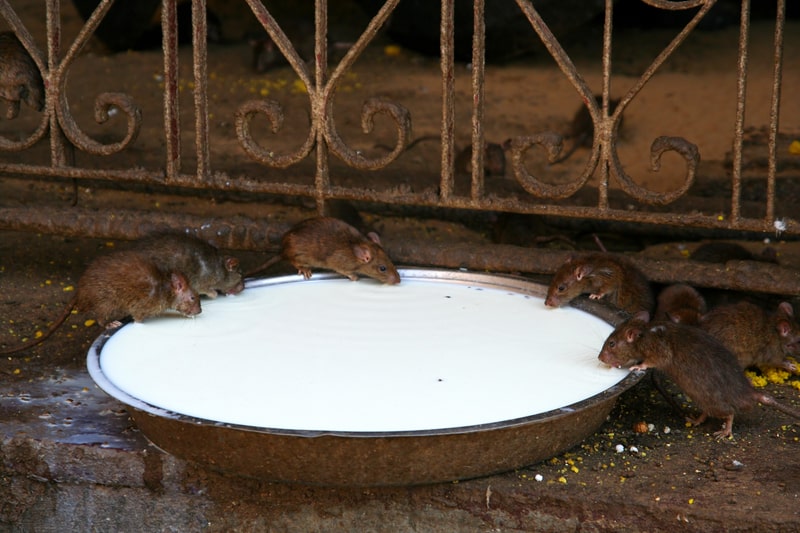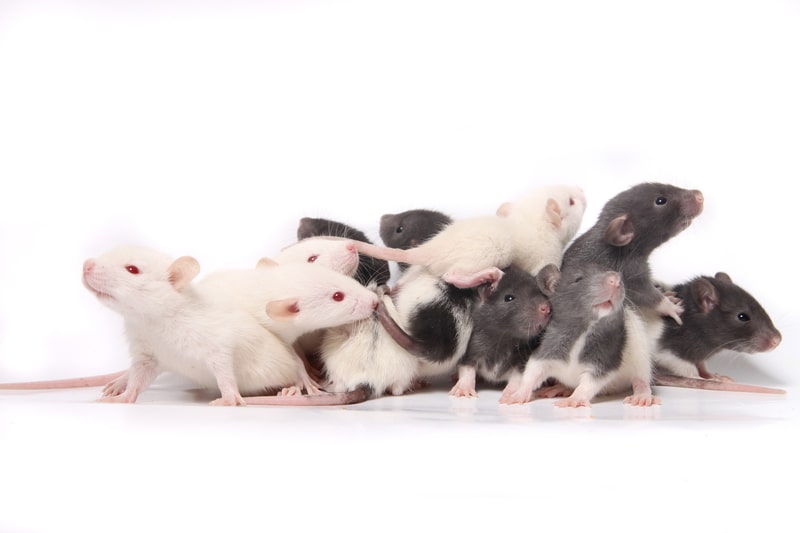Last updated on April 25th, 2023
63. Rats are known to eat almost anything, but this does not mean they should. There are foods that are fine for humans but are toxic to rats. Some common examples of toxic foods are poppy seeds, licorice, and blue cheese. Some foods can cause digestive problems. Examples include peanuts, onions, spinach, rhubarb, raw artichokes, and green bananas. Male rats should not eat citrus fruits, as they can cause kidney problems.
64. Rats have an unusual approach to nausea. A rat can eat a non-nutritive substance that can dilute the effects of something it should not have eaten. As examples, it may eat dirt or clay. This practice is known as pica.
65. When rats live in or near vegetable gardens, they do not always limit their diets to the food that is in the garden. They are as likely to feed on anything suitable that is nearby. A compost heap is one example. If you are composting food residue, you can expect rats to eat it.
66. Wild rats do not hunt for meat, but they will eat meat if it is available. They will eat carcasses, and small birds that are dying or dead.
67. In the Netherlands, rats have been trained to assist police. Rats are used to sniff out fake cigarettes, explosives, and drugs.
68. While rats have been considered to be the cause of the Black Death plague, research shows this was probably not the case at all. The bubonic plague that killed a large percentage of Europe’s population during the late Middle Ages was likely caused by lice that were carried by humans.
69. Nebraska’s Wesleyan University’s psychology department has had a fascinating feature for quite a few years. The school’s Basic Learning Principles class hosts “the Xtreme Rat Challenge.”

70. In some cultures, rats are considered holy. Rajasthan, India’s Karni Mata Temple is home to 25,000 black rats. This is based on Karni Mata, a sage and warrior woman. The rats are believed to be reincarnations of this woman’s followers. If a visitor sees a white rat, it is thought to be a special omen, as they are believed to be reincarnations of Karni Mata or her own sons.
71. Japan has a long history of keeping rats as pets. While this practice began many centuries ago, there is a noteworthy feature of these rats. As all albino rats came from one ancestor, research suggests domesticated rats originated in Japan, and were taken to Europe and eventually the Americas.
72. Most rats can live for a month or more without water. Kangaroo rats are exceptional. They can live their entire lifespan without consuming any water at all.
73. Up to 95% of animals used in animal tests are rats, hamsters, gerbils, and mice. Russia has a monument to honor these little animals. Novosibirsk, Russia’s Institute of Cytology and Genetics has a six-foot tall bronze mouse in its courtyard. Andrew Kharevich is the artist who created this statue.
74. Rats have very powerful jaws. Their jaws are similar to an alligator’s jaw. It can exert up to 7,000 pounds per square inch when it bites. Although rat-bite fever is rare, a bite can be dangerous.

75. A rat’s reproductive abilities are amazing. Rats can start breeding when they are only five weeks old. A female rat’s fertility period occurs around every three weeks. When a female rat becomes pregnant, the pregnancy only lasts around three weeks.
76. Similar to many other types of animals, groups of rats have a leader. This is true whether they are wild rats or pet rats. If you have two or more rats, they will decide which one is the dominant rat. After one rat has been established as the alpha, they will usually get along with each other. The process is easiest when the rats are young, and more difficult when they are adult males.
77. Some rats are bred for special characteristics. This is known as selective breeding. Some common examples include hairless rats and tailless rats. Selective breeding can result in health problems and other serious issues. Many people agree that selective breeding is unethical. This is especially so when rats that do not conform to the preferred standard are destroyed or used as food. As this practice is unethical, some rat clubs do not allow these rats to be used in advertisements, or shown at their competitions.
78. Studies are showing common house rats are getting larger. Common rats weigh around twelve ounces, and are around twenty inches long. While their size is increasing, researchers believe their physiology will stop common rats from becoming huge rats. As an example, researchers have determined common rats in New York City will never become larger than two pounds.
